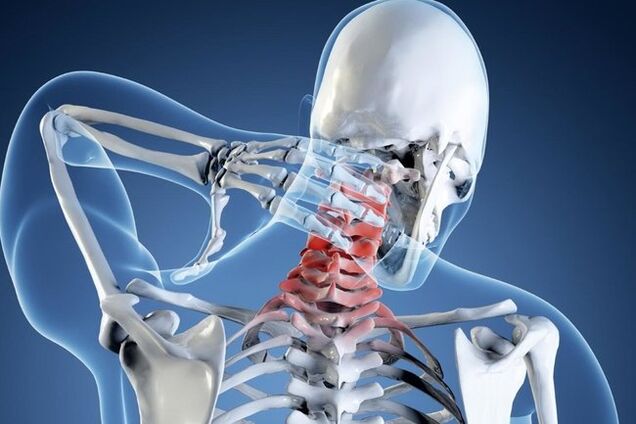
Osteochondrosis is a complex of pathological anatomical and functional disorders associated with dystrophic changes on intervertebral disks.This situation is developing with slow and timely intervention, good results can be obtained using simple conservative measures.
Reasons and symptoms of the osteocondrosis of the cervical spine
The cervical region is experiencing a burden associated with the mobility of vertebrae, neck and head.The anatomy of this segment helps the risk of vertabra's heads with acute or atypical movements and weak muscle corset protects the spine from damage. The causes of osteocondrosis of cervical spine are not finally studied and the course is often asymptomatic.This causes most patients to be very late to receive medical assistance.Osteocondrosis development leads to:
- Filling, instability of the structures of the spine;
- Injuries, connective tissue dysplasia;
- genetic tendency;
- To be a sedentary work or a long-term compulsory position, lack of sufficient physical activity;
- Unstable nutrition, lack of vitamins and trace elements in the diet.
Ligaments and degenerative changes in the cartilage cause the cause of the compression of arteries and nerve trunks, the brain circulation and pain disorder.It is easy to recognize the characteristic symptoms of the state.
- Nape, neck, painful feelings on shoulders.You can hear a crisp sound, characteristic of bending or converting the head.Drawing pains can be given to the thoracum area, there is a burning sensation between the shoulder blades.
- Power, insomnia, chronic fatigue and often feeling a loss of headaches.The headache with cervical osteocondrosis is concentrated in the occipital region and gives the side parts of the neck.
- Tilting the head, the sense of numbness, fingers can occur.
- Chest, nausea, dizziness.
Diagnosis and treatment of osteocondrosis of cervical spine
Diagnosis was made by an orthopedic doctor or neurologist based on a test of spine, radiograph or calculated tomography.If you are suspected of intervertebral hernia, MRI will be required and evaluate functional winged disorders - the reconstruction and study of fundus.
Conservative therapy includes symptomatic measures (pain removal, anti-exhausting therapy, antispasmodicas), as well as the restoration of natural cartilage with drugs.Ali massage, physiotherapy and therapeutic exercises are also effective.
Prevention of osteocondrosis of cervical spine
Regular physical activities and exercises to strengthen the muscle cassy behind the back effectively protect the normal state of spine.Control of neck and rear positions along the daily gymnastics and working day helps normalize the circulation of the blood, remove the load in separate segments of the spine.
It is necessary to follow the diversity of diets and avoid weight.It helps a massage course that should be repeated 2-3 times every year to activate metabolic processes and eliminate muscle cramps.



































